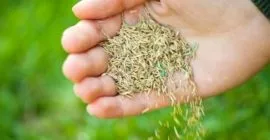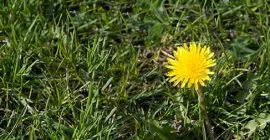What is Aeration?
Aeration is a way of creating small holes in the soil beneath your lawn. This allows air, water, and nutrients to reach the grass roots. It will also help to alleviate soil compaction and waterlogged lawns with poor drainage.
Why should you consider lawn aerating?

You should consider aerating your lawn if it gets heavy use. This could be from children, pets or footsteps that lead to soil compaction. If your lawn gets soggy and suffers from puddles, aeration will certainly help. If your lawn has an excess of thatch, aerating can assist by removing some the dead material that blocks airflow, drainage and nutrients from reaching the grass roots. This process stimulates root growth leading to a healthier lawn.
When is the best time for lawn aerating?
The best time to aerate is during the spring or autumn, this is because the lawn is actively growing, and the grass can fill in the open areas left after soil plugs are removed.
What tools you need to aerate?

The Kent & Stowe Stainless Steel Lawn Aerator 4 Prong is an ideal tool to use. The 4 hollow tines remove cores from the earth by simply pressing into the ground using the footplate. The tines are conically shaped for easy penetration into the soil and create spaces for air, water and nutrients to directly access the grass roots. The holes created reach the lower levels of soil to improve drainage. This tool is also known as a hollow tine fork.
Alternatively, a spike aerator or garden fork can be used to simply poke holes into the ground. This approach is not as effective as soil is compacted to create holes rather than removed, but can still help with aeration. You should be aiming to create holes approximately 5-10 cm deep and approximately 10-15 cm apart.
For very large areas you can hire or purchase a powered lawn aerator for the job, as it can be very hard work.
Tips on lawn aerating
Before staring ensure the soil is moist enough. If the ground is bone dry the soil will be too hard to penetrate. Aerating the next day after a rain or watering your lawn the day before is a good idea.
Soil plugs created from tines can be left to dry and broken up with the back of a rake or going over them over with a bladed lawn mower (Your lawn mower blade may need to be sharpened after breaking up the plugs.)
After aerating, it’s a good idea to feed your lawns with Westland Lawn Thickener Feed & Seed which fills in sparse areas and patches with new lush, green grass. Your children and furry friends can safely enjoy the lawn right after application.

After aerating Westland Lawn and Turf Dressing can be applied. This will fill the holes but maintain drainage and aeration. Apply about 2 litres per sq.m of Westland Lawn & Turf Dressing over the area then use a brush to fill in the holes and sweep up the excess.

View our lawn calendar to find out what other jobs there are to do on the lawn this month!




